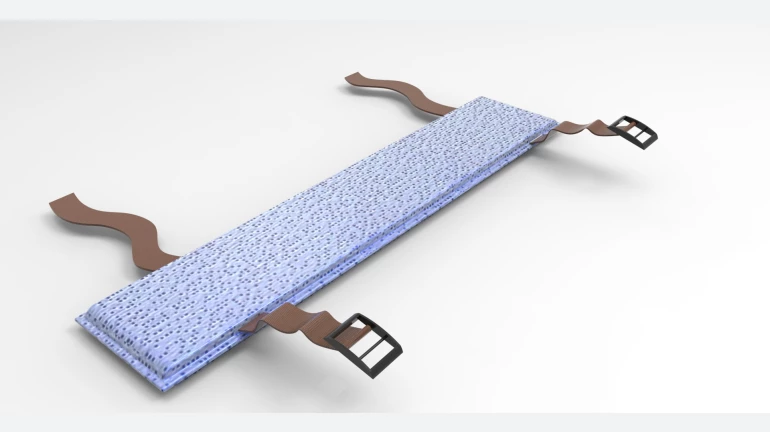
In India, 10 per cent-30 per cent people are admitted to the hospital due to road traffic injuries and a majority of these people tend to develop varying levels of disabilities.
An accident victim may just have a fracture- but due to improper handling, while transferring them to a hospital, the condition may worsen. A simple splint could prevent matters from getting worse. Award-winning innovator Mayur Sanas wanted to find a solution. A native of a small village located in Satara district of Maharashtra, he joined an engineering college in Kolhapur and is now working with BETiC.
Mayur explains, “The tendency of a fracture to cause swelling during the first few days, prevents a full plaster cast from being applied to immobilize the limb. Hence, doctors use a splint (essentially a half-cast) to accommodate tissue volume changes due to swelling and subsiding, after which a full plaster cast is applied. The splints available in the market were either ineffective or expensive. So, I developed an alternative design using paper as the base material, stacking it with plaster rolls, enclosing both in a fabric envelope and attaching Velcro straps.”
The split is dipped in water, placed at the fractured area, gently pressed to give it the desired shape, and tied up with the straps. It dries within a few minutes, giving ample support to the fracture site. The material allows the skin to breathe. Initially called ‘hybrid plaster splint’, the product is now called as FractoAid after a few technical upgradations with respect to its fabric and packaging. This innovation is important because a majority of victims of road traffic injuries are men in the peak working age group of 15-44 years and belong to the poorer sections of society.
Also Read: World Hunger Day: Poor Diet Damaging Childrens' Health Worldwide, UNICEF Warns
Prof B Ravi, founder of BETiC - Biomedical Engineering and Technology incubation Centre of IIT Bombay, who has mentored Mayur explains, “the challenge was to select the right type and thickness of paper and other required materials so that the desired strength could be achieved with the least possible weight. The product has developed 6 variants up to date, suitable for different age groups, that is, a small size splint for individuals between 6-10 years of age, a medium-size splint for individuals between 11-21 years of age and a large size splint for individuals above 21 years of age.”
Following are some of the innovations to solve the problem of disability:
1. Clubfoot Brace Monitor
1 in 500 children in India are affected by Clubfoot deformities which is a birth deformity where the feet get rotated at the ankle. It can be corrected using leg braces, where the feet of the child are placed in a series of plaster casts and changed every week for 6 weeks. However, the results are varied as parents do not always follow the instructions properly. BETiC developed a clubfoot brace monitor with touch sensors- that capture and help to monitor the time span for which the child wears the braces. For the first three months the child wears the braces round the clock, the duration is then reduced to 8 hours by age 4. This data is tracked every 15 mins and is recorded in the device software. Doctors can then access the actual usage of the brace and suggest accurate treatment. In some cases, the child’s feet get completely cured.
2. Ratna Nidhi prosthetic leg
The Ratna Nidhi Leg, derived from the Jaipur Foot, has been created using a new process that enables rehabilitation engineers to deliver prosthetic legs to the amputees and landmine victims in the most rural and vulnerable populations in a shorter time. The new process uses mobile 3D parametric modelling to accurately capture and transmit 3D models of the residual limb, to design comfortable and yet affordable trans-femoral sockets. This is in the pilot phase right now.
Also Read: Mental Health Week: Here's How Mumbai Is Spreading Mental Health Awareness





